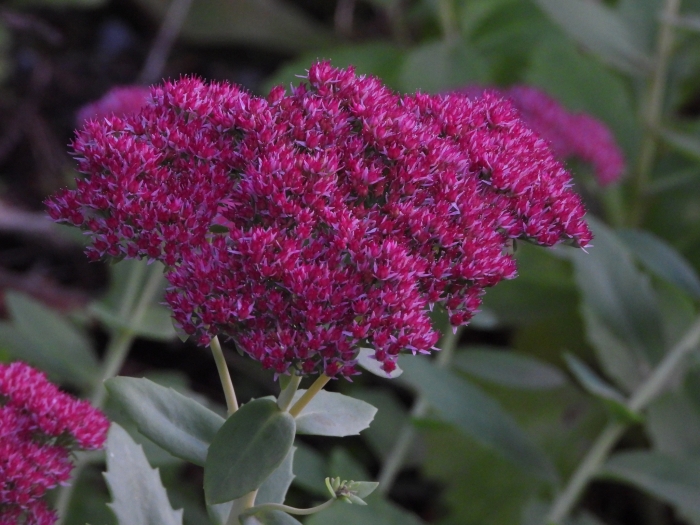Autumn Joy
(Hylotelephium spectabile × telephium)
Autumn Joy (Hylotelephium spectabile × telephium)
/
/

© Justin Flint
CC BY 4.0
Image By:
© Justin Flint
Recorded By:
Copyright:
CC BY 4.0
Copyright Notice:
Photo by: © Justin Flint | License Type: CC BY 4.0 | License URL: http://creativecommons.org/licenses/by/4.0/ | Uploader: bluejaybluejay | Publisher: iNaturalist |
























Estimated Native Range
Summary
Hylotelephium spectabile × telephium, commonly known as Autumn Joy or by the cultivar name ’Herbstfreude’, is a hybrid succulent of garden origin, combining traits from its parent species native to rocky outcrops and dry slopes in Asia. This perennial herb typically grows at a moderate rate to a height of 1.5-2 feet (0.46-0.6 meters) and a width of 2-2.5 feet (0.6-0.8 meters). It features fleshy, blue-green leaves and clusters of star-shaped, pink flowers that become deeper in color as they mature, blooming in late summer through fall. The flowers are highly attractive to pollinators and are quite showy, making them a focal point in the garden.
Autumn Joy is valued for its ease of maintenance, drought tolerance, and long-lasting blooms which provide interest from summer into fall. It is commonly used in rock gardens, borders, and as a ground cover due to its clumping habit. It thrives in full sun to part shade and prefers medium to fast-draining soils such as clay, loam, or sandy types. While it requires low amounts of water, making it suitable for xeriscaping, it is important to avoid waterlogged conditions as this can lead to root rot. There are no major disease problems, but it can be susceptible to mealybugs and slugs. Autumn Joy does not have aggressive roots, making it a good choice for areas where this could be a concern. It is also not known to be invasive when grown outside its native range, but as with all plants, gardeners should monitor and manage growth as appropriate.CC BY-SA 4.0
Autumn Joy is valued for its ease of maintenance, drought tolerance, and long-lasting blooms which provide interest from summer into fall. It is commonly used in rock gardens, borders, and as a ground cover due to its clumping habit. It thrives in full sun to part shade and prefers medium to fast-draining soils such as clay, loam, or sandy types. While it requires low amounts of water, making it suitable for xeriscaping, it is important to avoid waterlogged conditions as this can lead to root rot. There are no major disease problems, but it can be susceptible to mealybugs and slugs. Autumn Joy does not have aggressive roots, making it a good choice for areas where this could be a concern. It is also not known to be invasive when grown outside its native range, but as with all plants, gardeners should monitor and manage growth as appropriate.CC BY-SA 4.0
Plant Description
- Plant Type: Succulent
- Height: 1.5-2 feet
- Width: 2-2.5 feet
- Growth Rate: Moderate
- Flower Color: Pink, Red
- Flowering Season: Summer, Fall
- Leaf Retention: Deciduous
Growth Requirements
- Sun: Full Sun, Part Shade
- Water: Low
- Drainage: Fast, Medium
Common Uses
Border Plant, Butterfly Garden, Drought Tolerant, Fire Resistant, Groundcover, Low Maintenance, Rock Garden, Showy Flowers, Street Planting
Natural Habitat
Rocky outcrops and dry slopes in Asia
Other Names
Common Names: Herbstfreude
Scientific Names: , Hylotelephium spectabile × telephium,
GBIF Accepted Name: